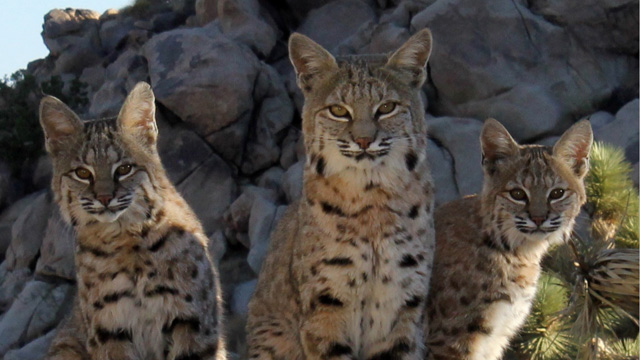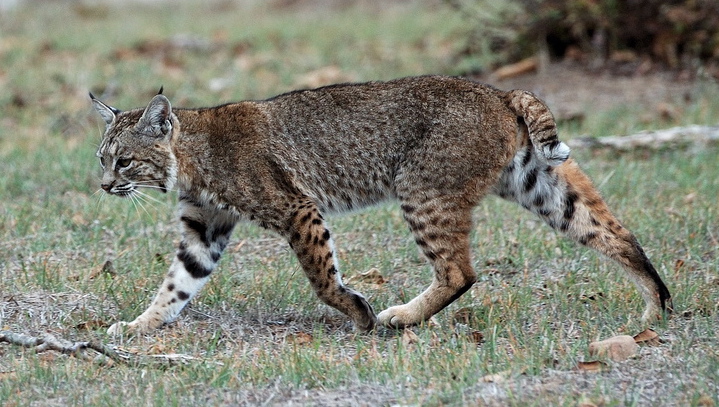The Bobcat
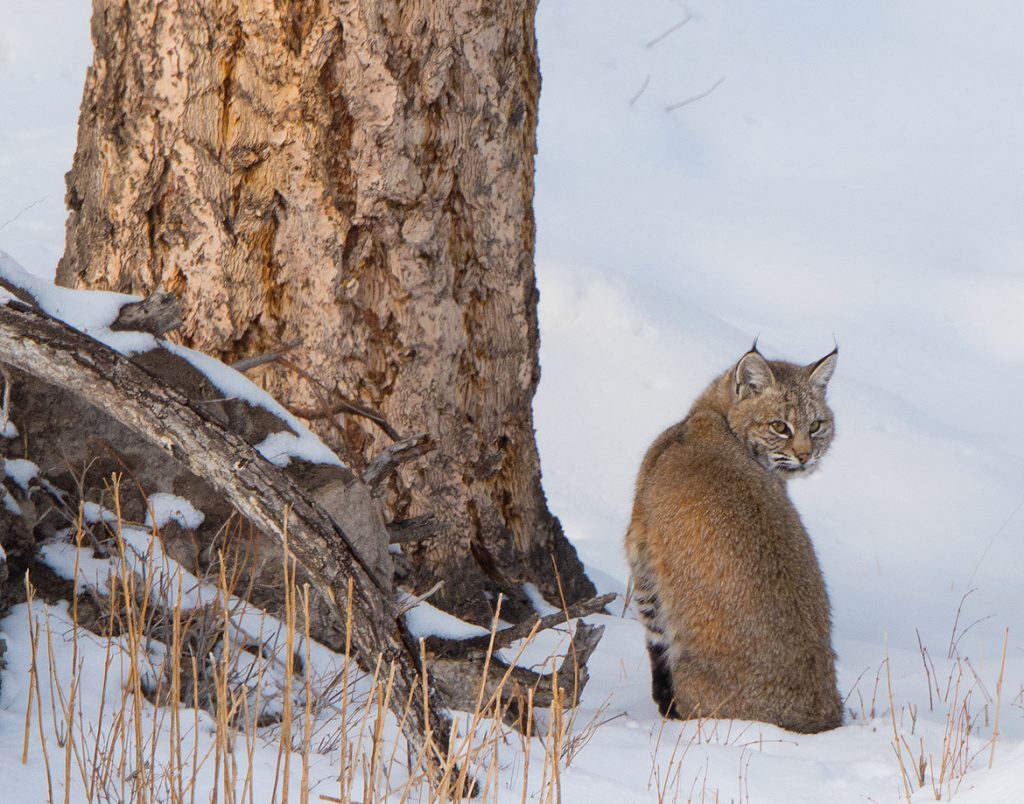
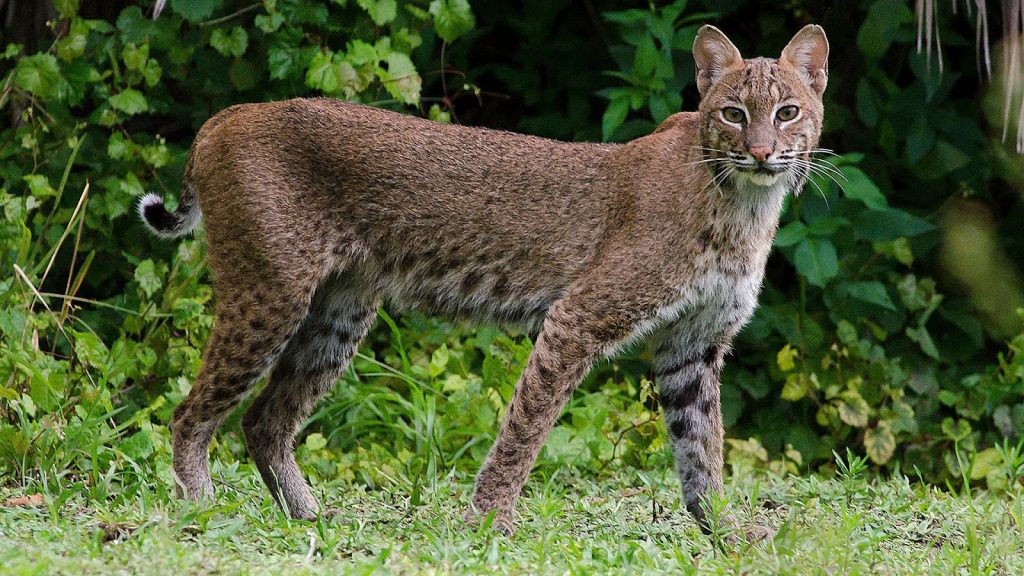
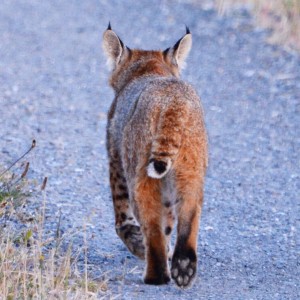
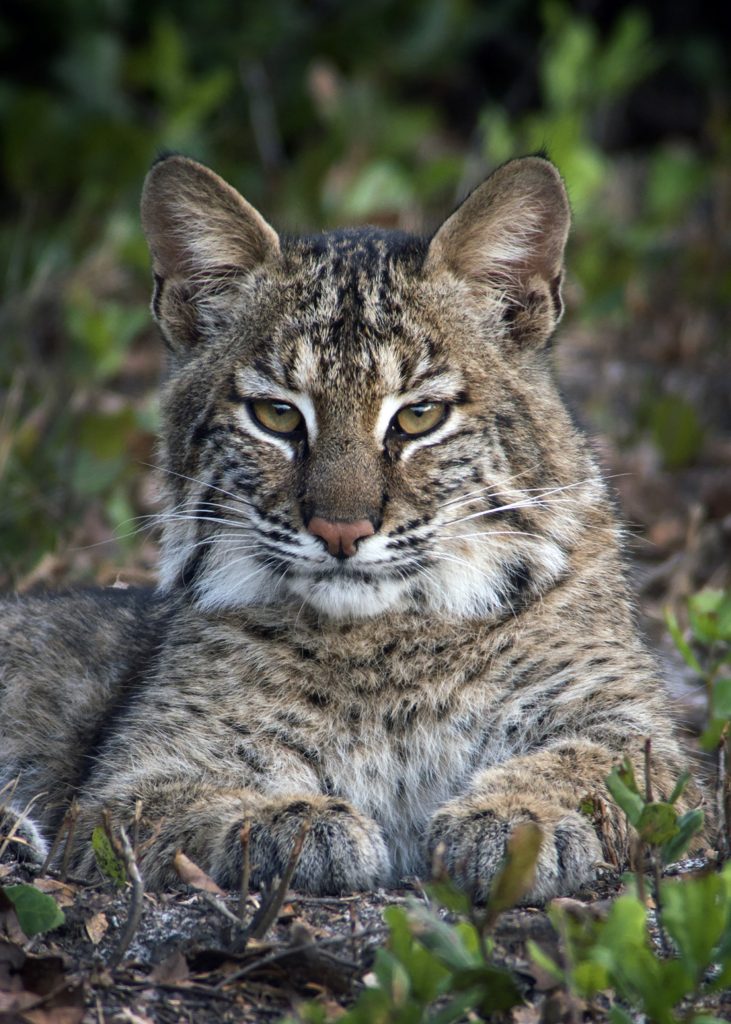
A Bobcat taking a nap on someone’s porch is woken up by their curious housecat.
Bobcat
Kingdom: Animalia
Phylum: Cordata
Class: Mammalia
Order: Carnivora
Family: Felidae
Subfamily: Felinae
Genus: Lynx
Species: Lynx rufus
Members of the genus Lynx:
Canada Lynx
Eurasian Lynx
Iberian Lynx
Bobcat
Bobcat conservation status: http://www.iucnredlist.org/details/12521/0
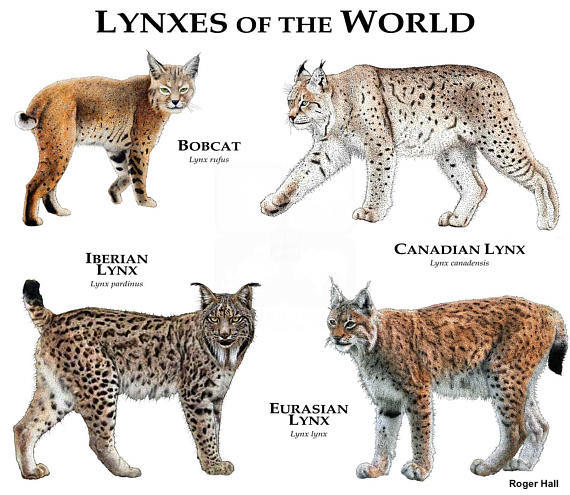
Background on the Lynx Genus
A Lynx is any of the four species within the Lynx genus of medium-sized wild cats, which includes the Canada Lynx, Eurasian Lynx, Iberian Lynx, and the Bobcat. The name “lynx” originated in Middle English via Latin from the Greek word λύγξ, which is derived from the Indo-European root leuk, meaning (“light, brightness”)- in reference to the luminescence of their reflective eyes.
The four Lynx species have the largest range across the world of any felid, and are found on both sides of the Atlantic. All Lynx or (Lynxes, you can say it either way) have a short tail, characteristic tufts of black hair on the tips of their ears, and large paws. Their paws may be larger than a human hand.
Body color varies from medium brown to gold to cream, and is often marked with dark brown spots, especially on the limbs. All species of Lynx have some white fur on their chests, bellies, and on the insides of their legs.
Lynx’s pupils contract to circles instead of slits in daylight. Generally the pupils of most small cats contract to vertical slits, while those of Tigers and most other big cats contract to a circle. There some exceptions, just to name a couple: the Snow Leopard’s eyes contract to a sort of oblong shape and the Pallas’s Cat’s eyes contract to circles even though it is a smaller cat.
People hunt and trap the Lynx species and this must be banned. Trapping of wild cats and other animals is cruel. They can die long painful deaths from dehydration, hypothermia, and blood loss often from attempting to chew their own limb off. Trapping is also disruptive to the ecosystem at large. https://thefurbearers.com/the-issues/trapping/cruelty-injuries
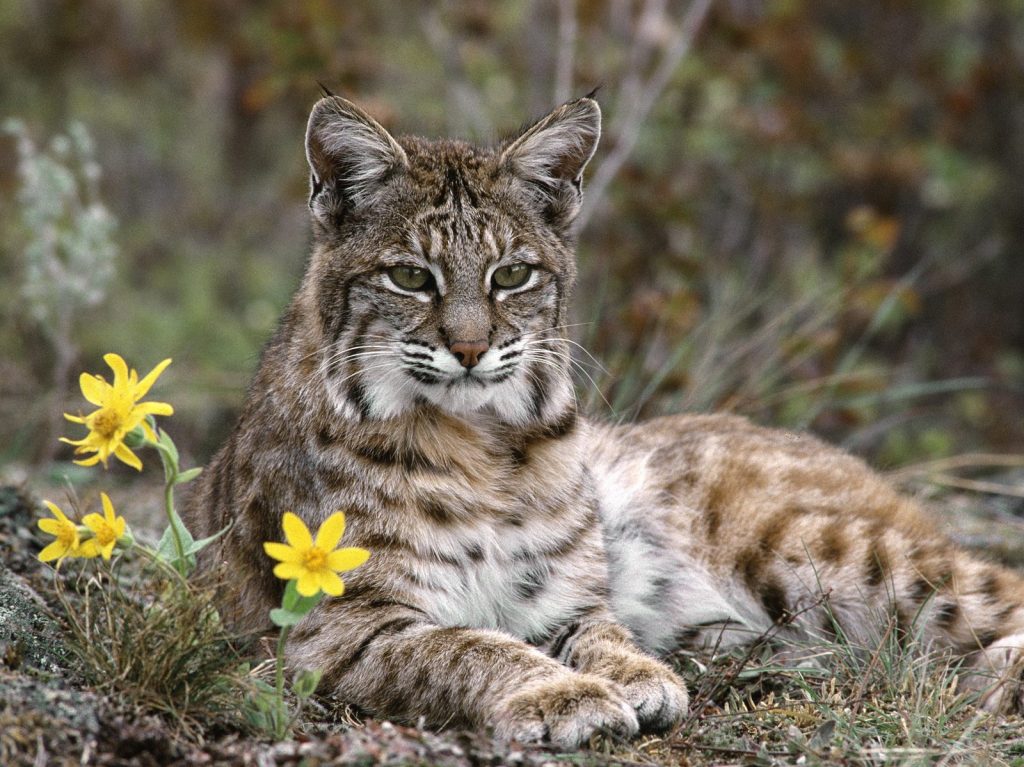
The Bobcat
The Bobcat is a Lynx species found across the North American continent; it lives from northern Mexico all the way to southern Canada. The Bobcat is a very adaptable predator and can thrive in semi desert, urban edge, forests, swamps, canyons, and scrubland- it will even live near the ocean. They can live up to 17 years.
The Bobcat is a medium sized wild cat, hardy and powerful. It weighs in at 4-18 kg (9 to 40 lbs). The Bobcat has a vast range of color patterns: it can be almost orange with black spots, or silvery brown with delicate spots. All of them have the typical tufted Lynx ears and stubby tail.
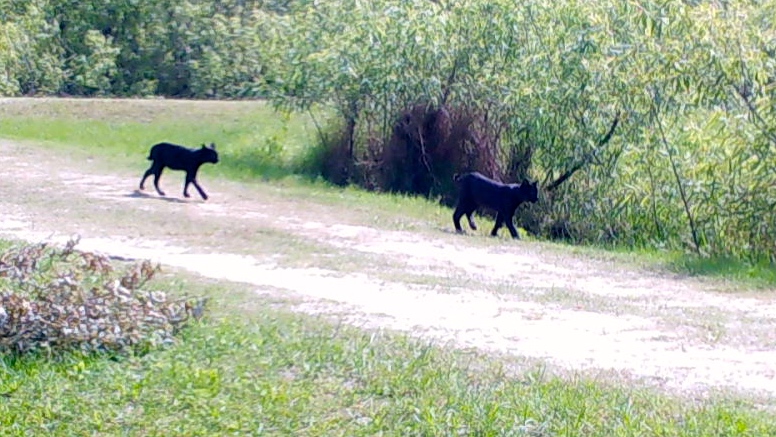
Though rare, Bobcats can sometimes be melanistic (all black).
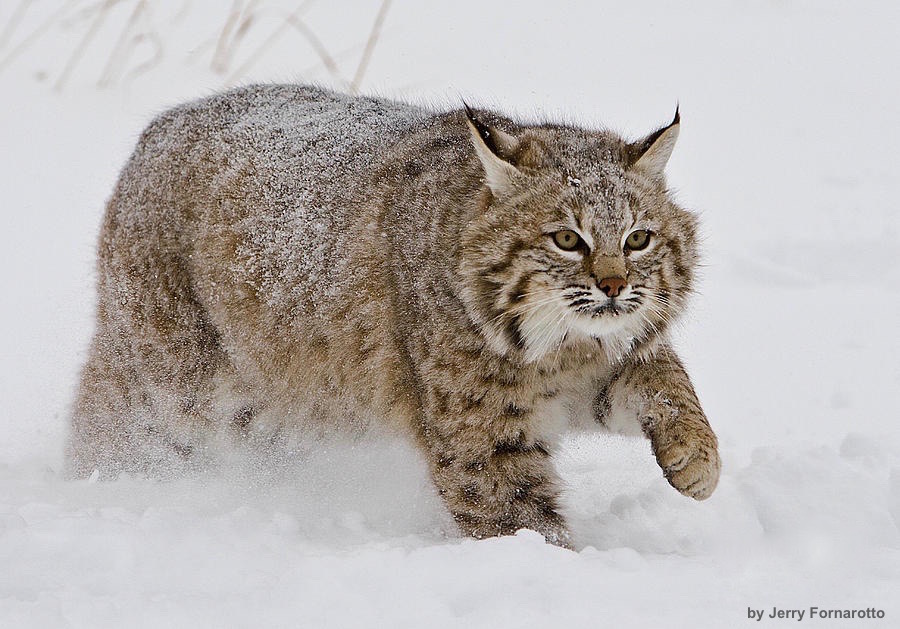
The Bobcat has had to contend with humans encroaching on their territory, and hunting and trapping them as well. However, Bobcat populations are still pretty healthy. Its favorite prey are rabbits and hares but it will also eat birds, rodents, and insects. It will even take down deer.
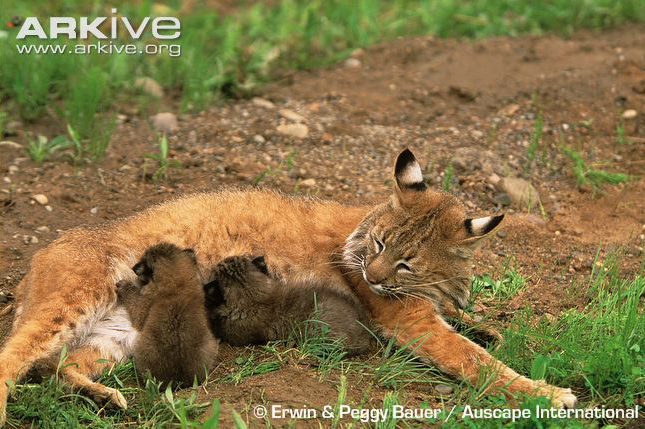
Some farmers have complained the Bobcat attacks their livestock but cat conservation authorities are closely monitoring the process and studies show that allowing adult cat predators to live near farms is actually much safer for livestock than relocating the cats or worse, killing them. Older adult cats learn to stay away from the farms in order to avoid conflicts with humans. If they are removed, the young inexperienced ones come into the abandoned territories to try their own luck at the farm and the cycle continues. Experienced animals learn to stay away from the area and do so. http://journals.plos.org/plosone/article?id=10.1371/journal.pone.0079713
Additionally, predation of farm animals is generally very low. Governments should compensate farmers/ranchers for any loss of livestock and continue to protect apex predators like the Bobcat, who have a right to live there too and also provide a valuable service by keeping the ecosystem healthy and in balance. Bobcats primarily eat rabbit and deer, whose populations are kept healthy and right sized due to the Bobcat’s efforts.
More wild cats here


